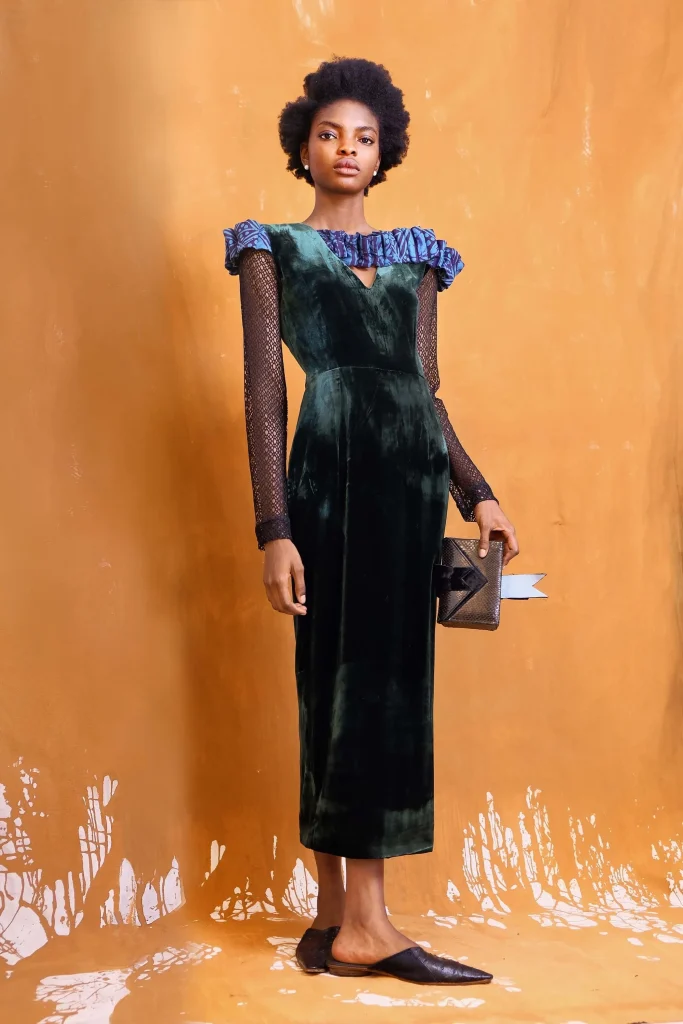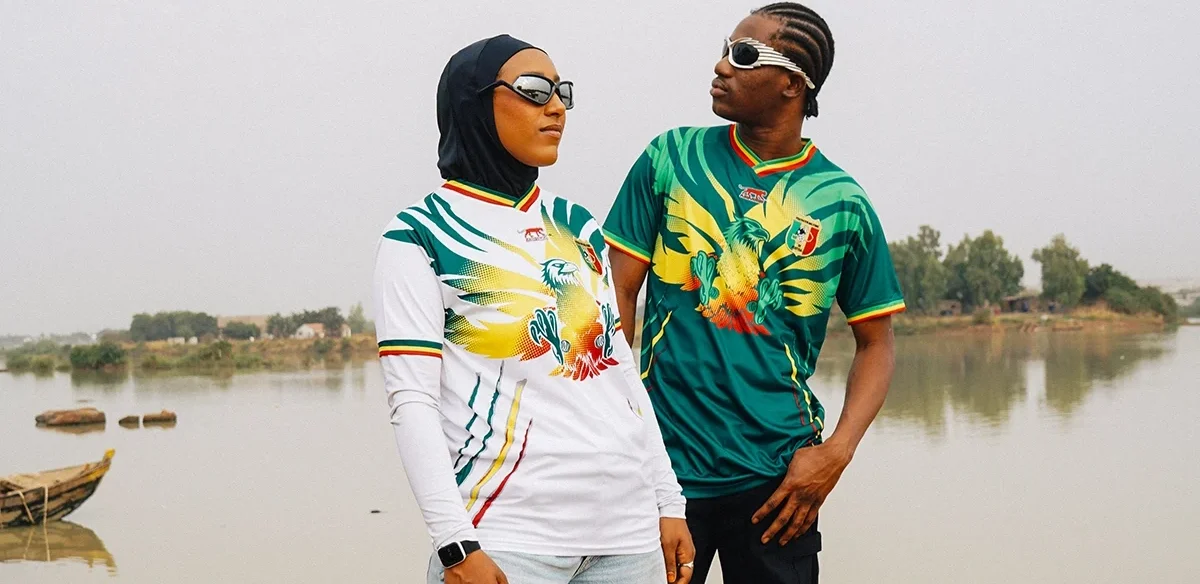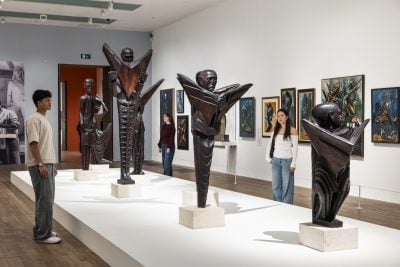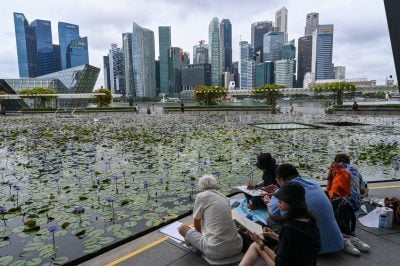Around the world, very few countries have proved immune to the rise of fast fashion. Businesses based on the concept of cheaply made, “buy now, throw away later” clothing and homeware are booming, especially with the rise of online shopping.
Influenced by globalisation and media representation, traditional African textiles and heritage crafts such as handwoven fabrics, detailed beadworks and traditional dyeing methods have been marginalised, often dismissed as outdated or reserved only for ceremonial use.
The African continent, particularly West Africa, of course has a rich history of traditional textiles and heritage crafts stretching back millennia. Kente cloth, originating from the Ashanti Kingdom in Ghana, is rich in vibrant colours and patterns and was originally used only for royalty and sacred ceremonies. Korhogo cloth from Côte D’Ivoire is made by the Senufo people and features colourful images of animals, people, and geometric designs.
Countercultural revival
But despite the global onslaught the popularity of heritage crafts is once again on the up, and is growing most quickly among a generation who grew up disconnected from traditional cultural craftsmanship in the face of increasing globalisation. What started as a countercultural revival movement is introducing traditional African crafts to a new audience on the global stage.
Amaka Osakwe is a Nigerian designer who founded her Lagos-based fashion label in 2010. A signature look for her iconic brand is the use of adire, a traditional Yoruba indigo-dyed textile the usage of which revolves around modern-day Ogun and Osun states in western Nigeria.
These prints traditionally conveyed messages and observations, and Osakwe is re-purposing traditional motifs and inventing her own, blending tradition with modernity. “When we go on about ‘hand-painted, hand-dyed,’ it’s real,” she explained to the New Yorker.
In her early collections Osakwe made fringes out of aso oke, a Yoruba hand-woven cloth. In a 2013 collection she created clothes with traditionally Western silhouettes, including a blouse and pencil skirt, made with traditional Nigerian fabrics and prints.
The dyeing process, all carried out by hand, can take months and months, yet she ensures that the techniques used in garment creation today – and the hard work involved – reaps its rewards. Osakwe’s creations have been worn by celebrities including Beyoncé, Lupita Nyong’o, and Michelle Obama, and she has showcased her collections at New York Fashion Week, the museum at the Fashion Institute of Technology and the Brighton Museum and Art Gallery in England, celebrating African cultural heritage, and in doing so introducing the designs to the global fashion stage.

Beads’ roots
As critical to the story of pan-African history as textiles is beadwork. Regions and tribes across the continent have unique styles, patterns, and meanings associated with beadwork, and bead designs and patterns serve different functions, from indicating social status to fulfilling ceremonial roles.
Beadwork is not only a form of artistic expression but represents defining life moments, such as birth, marriage, and death. Its forms and designs differ across the continent: the Zulu people of South Africa are renowned for beadwork featuring bright, bold geometric patterns; in Western Africa glass chevron beads, originally from Venice, are most common, as they were frequently used in exchanges with Dutch traders from the 1500s.
South African designer Laduma Ngxokolo incorporates traditional tribal beadwork practices into his creations. Many of these are fusions of traditional beadwork patterns with modern knitwear. In 2011, inspired by Xhosa cultural motifs, he founded the brand MaXhosa Africa with the aim of exploring bold and bright knitwear concepts that celebrated traditional Xhosa beadwork designs while also using traditional South African materials such as mohair and wool.
Speaking to the Sable Network, Ngxokolo explained how, in founding his brand, he “set out a vision to showcase the astonishing beauty of the Xhosa people” and to “translate it in a modern way that appeals to youth [that is] influenced by international trends”.
And it didn’t take long for his vision to be realised. Ngxokolo has showcased his work in Berlin, London and New York. In March this year he unveiled the Umbulelo collection at Paris Fashion Week. Taken from the isiXhosha word for gratitude, Ngxokolo describes this collection as “a love letter to [his] ancestors” in an interview with News 24. These latest designs blend Xhosa-inspired vibrant and bold prints with Western-style cuts and silhouettes.
It may seem ironic that one of the harbingers of modernity – social media – has given rise to a resurgence of interest in traditional African heritage crafts and the skills, stories, and significance behind these artisanal practices. French-Malian photographer Nybe Ponzio shares his photos on Instagram as @visualsbyponzio – shots of everyday life in Mali, including children wearing traditional Malian dress, and a group of women braiding one another’s hair. His images, displaying traditional African heritage in glorious technicolour, are eagerly “liked” by a global audience who, it seems, cannot get enough of these snapshots of traditional African culture meeting modernity.
Senegalese artist Samba JJ posts on Instagram under the handle @lejardinjolof; his page, which boasts an impressive 19,000 global followers, is dedicated to images of traditional African crafts including jewellery and tribal masks. In an interview with Muse Origins he said he wanted to “bring traditional masks to life for a modern audience… by translating their meaning into modern times”.
Like many heritage concepts, traditional African artistry must adapt to survive, and Samba isn’t the only artist adapting centuries-old tradition and significance for a global audience.
The meaning of beadwork has also evolved over the years, and these beautiful decorations are no longer used solely to adorn jewellery, shoes or clothing.
Nigerian artist Lanre Buraimoh has led the way in a beadwork renaissance by creating intricately detailed paintings that depict Yoruba cultural symbols using thousands of bold and beautiful glass beads.
Buraimoh describes this unique visual art form as “bead painting” and in an interview with Vanguard described his chosen method as “a vehicle for translating [his] inner vision to realism”.
Bold and beautiful, his works depict traditional Yoruba themes and concepts, including traditional beliefs, love, animals, and the family unit. His 2019 work The Kiss depicts two entwined bodies embracing under the moon, and his 2011 work Huts depicts colourful houses clustered together under a blue sky. Buraimoh’s works have been exhibited around the world, including Nigeria, Denmark, the UK and US.
He has received multiple international accolades from institutions including the American Art Awards and Citywide African American Exhibit.
Factory replicas
But challenges remain. With the rise of mass tourism to Africa, cheap, factory-made replicas risk flooding the market, affecting the income of artists and diluting the cultural significance of these crafts passed down through generations. Community groups, such as Kenyan women’s group SATUBO, help train up the next generation of artisans and provide skills and training to provide rural women with a viable source of income, and to preserve these ancient skill sets. In a world dominated by speed and convenience, the resurgence of traditional African artistry stands as a powerful act of cultural resilience and creative renaissance.
These crafts – steeped in symbolism, identity, and history – are not just historical practices, but living, evolving art forms that continue to speak to a new generation. In the capable hands of designers like Amaka Osakwe and Laduma Ngxokolo, and the vision of artists such as Lanre Buraimoh and Samba JJ, Africa’s artistic heritage is being redefined, celebrated, and projected onto the global stage.
Want to continue reading? Subscribe today.
You've read all your free articles for this month! Subscribe now to enjoy full access to our content.
Digital Monthly
£8.00 / month
Receive full unlimited access to our articles, opinions, podcasts and more.
Digital Yearly
£70.00 / year
Our best value offer - save £26 and gain access to all of our digital content for an entire year!

 Sign in with Google
Sign in with Google 



